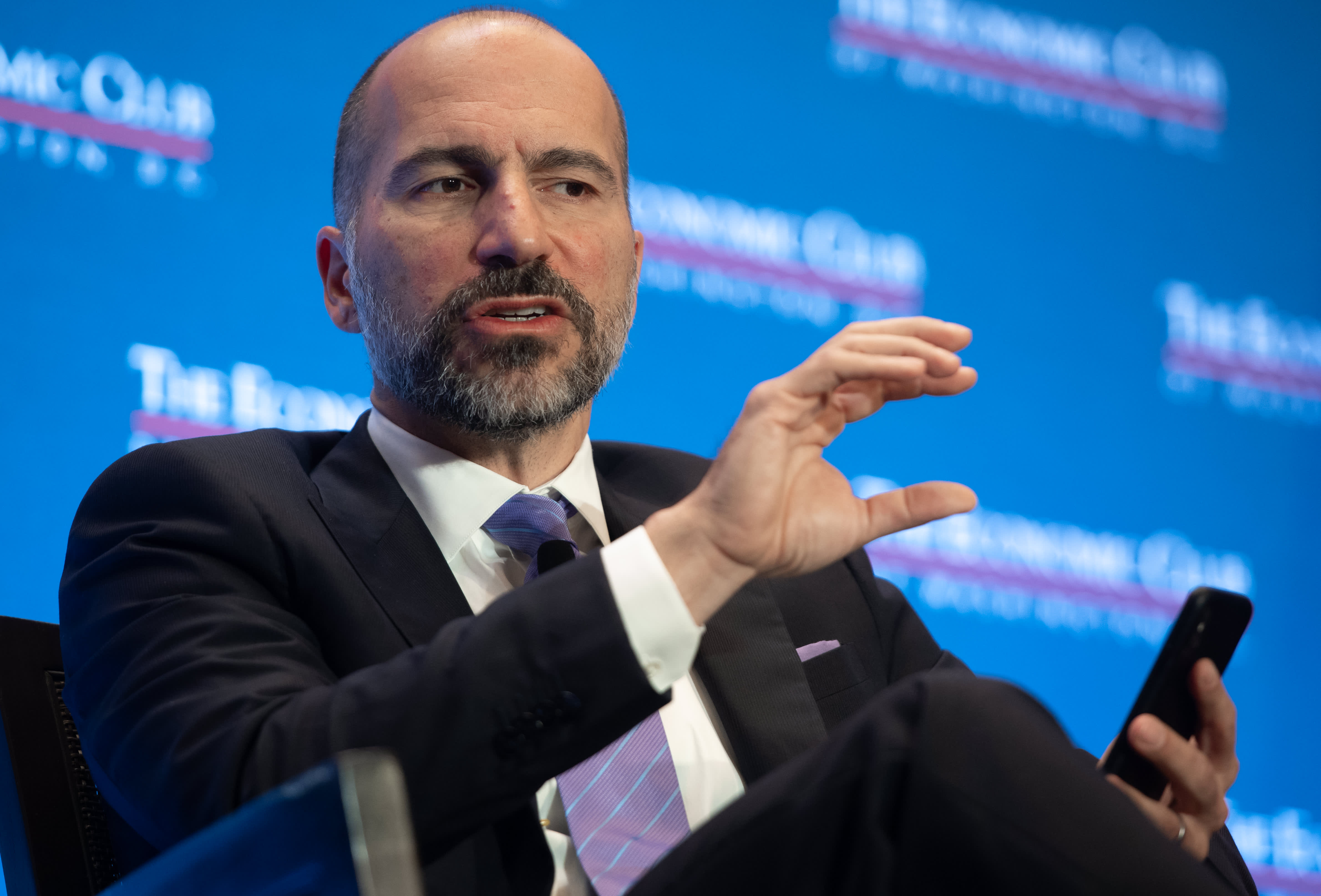Dara Khosrowshahi, CEO of Uber Technologies, speaks during an Economic Club of Washington event in Washington, DC, June 11, 2019.
Saul Loeb | AFP | Getty Images
Uber shares dropped as much as 4% after the company reported third quarter revenue on Thursday that missed Wall Street’s expectations, including a revenue decline of 18% from last year.
Here’s how the company performed versus what Wall Street analysts were expecting for the period ending September 30, 2020:
- Losses: 62 cents per share vs. 65 cents per share expected, according to a consensus of analysts surveyed by Refinitiv.
- Revenue: $3.13 billion vs. $3.20 billion expected per Refinitiv.
Overall, Uber lost $1.09 billion on a GAAP basis during the quarter, an improvement from a year ago when their losses amounted to $1.16 billion.
Here’s how its largest business segments performed:
- Mobility (gross bookings): $5.91 billion
- Delivery (gross bookings): $8.55 billion
Mobility adjusted net revenue, including Uber’s core Rides business, declined 53% year-over-year to $1.37 billion for the third quarter, while Delivery adjusted net revenue, including from Uber Eats, grew 190% year-over-year to $1.14 billion. Adjusted net revenue is a non-GAAP measurement that measures revenue minus driver incentives, driver referral payments, and the cost of reimbursing drivers for Covid 19 protection equipment.
The company reiterated guidance that Uber expects to be profitable on an EBITDA basis by the end of 2021.
Uber shares had skyrocketed on Wednesday and continued climbing Thursday ahead of earnings, after the company’s proposed ballot measure, Proposition 22, won voters’ support in California elections.
Prop 22 allows Uber, along with its peers and competitors Lyft, Instacart and DoorDash, to treat their drivers and couriers as independent contractors, not employees. That means Uber will avoid the costs of providing a full slate of benefits and protections for drivers, including paid sick days and other time-off, unemployment insurance and healthcare.
Instead, under Prop 22 in California, Uber will pay qualifying drivers partial benefits, like a minimum base pay that’s better than federal minimum wage, and a subsidy on drivers’ health insurance, with the subsidy amount based on how many hours they work.
Besides the political fight to preserve their business model, Uber has faced pandemic-related negative impacts to its main ride hailing business through most of 2020. As a variety of health orders and border policies limited travel and commuting, however, Uber users ordered more meals for delivery via Uber Eats.
With its food delivery business outpacing its core rides business in the second quarter of 2020, Uber agreed to buy out the courier service Postmates, once seen as a competitor to Uber Eats, for a deal valued around $2.65 billion in July. Earlier, it acquired Cornershop, a grocery delivery business, and started making grocery deliveries in New York City last month.
Since its second-quarter report, Uber raised half a billion dollars in equity funding to fuel the growth of its logistics arm, Uber Freight. That business unit, which Uber started in 2017, has a post-money valuation of $3.3 billion, the company said in a statement. Uber Freight recorded just $290 million in gross bookings during the third quarter of 2020, a 30% increase from the same time last year.
This is a developing story, please check back for updates…
